
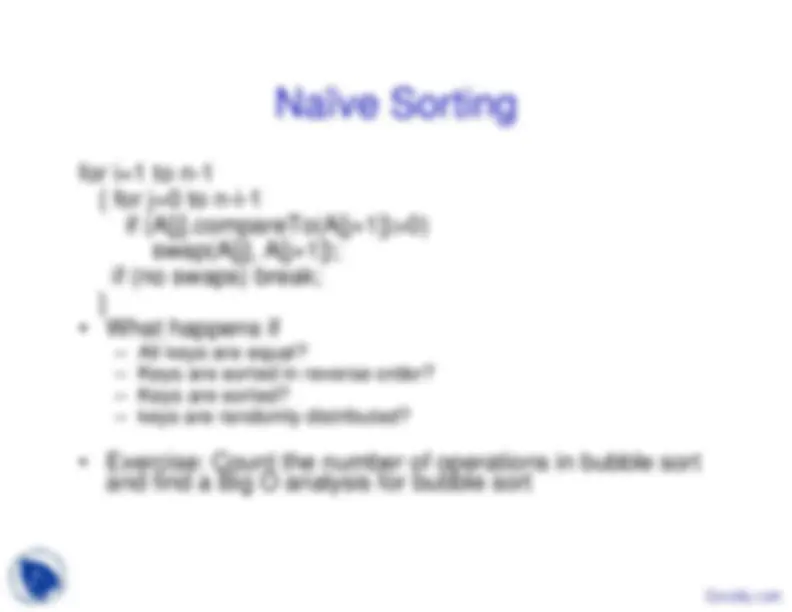
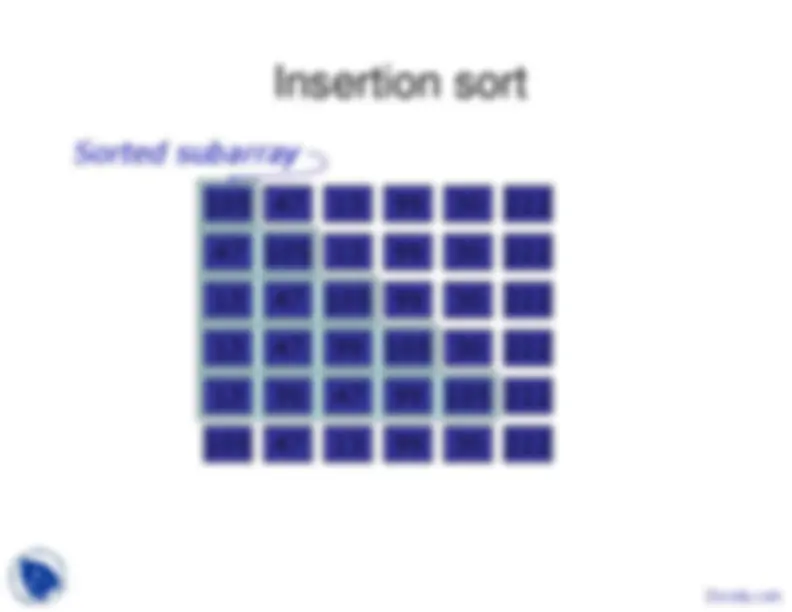
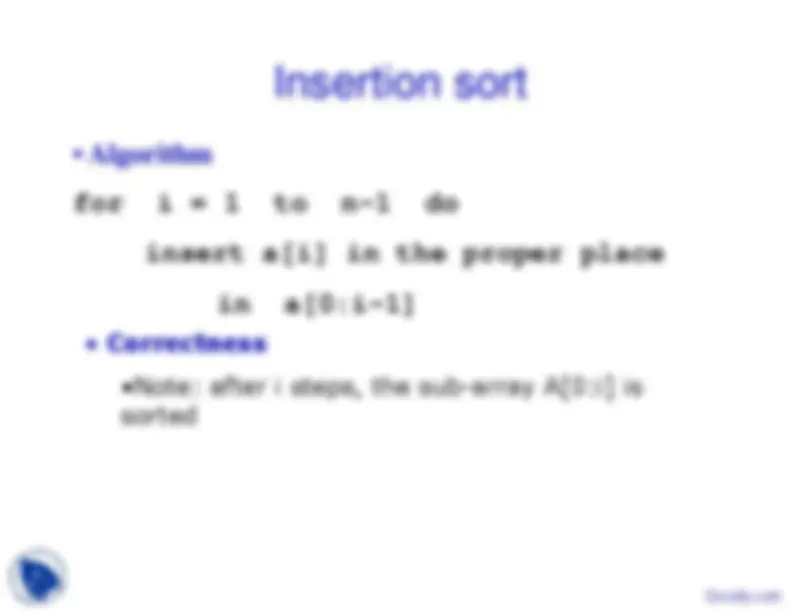


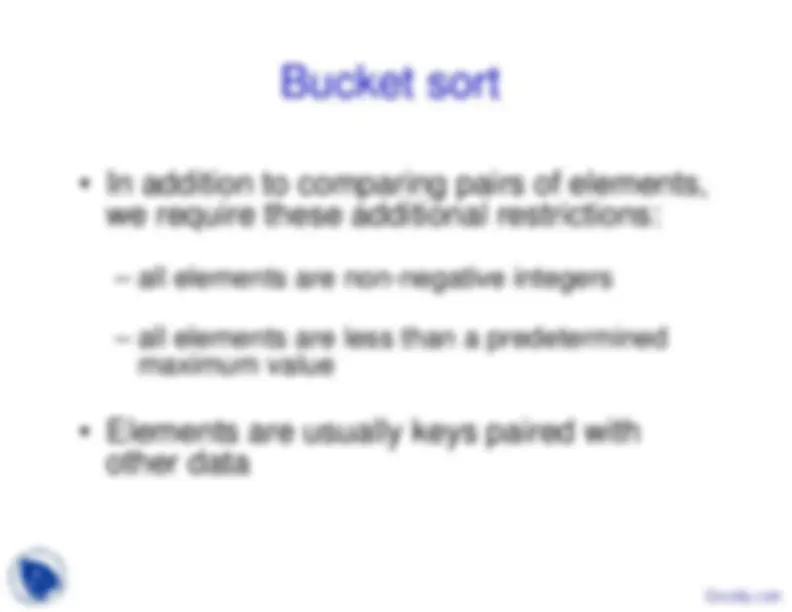

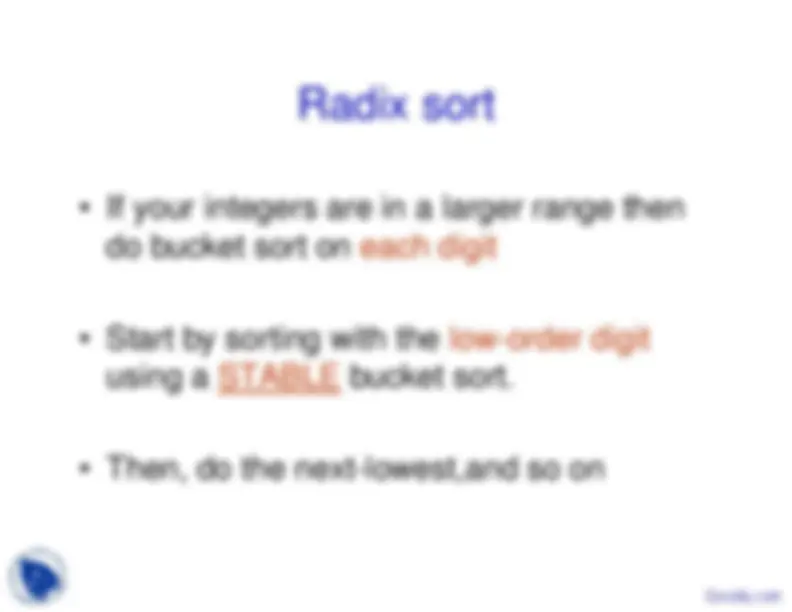
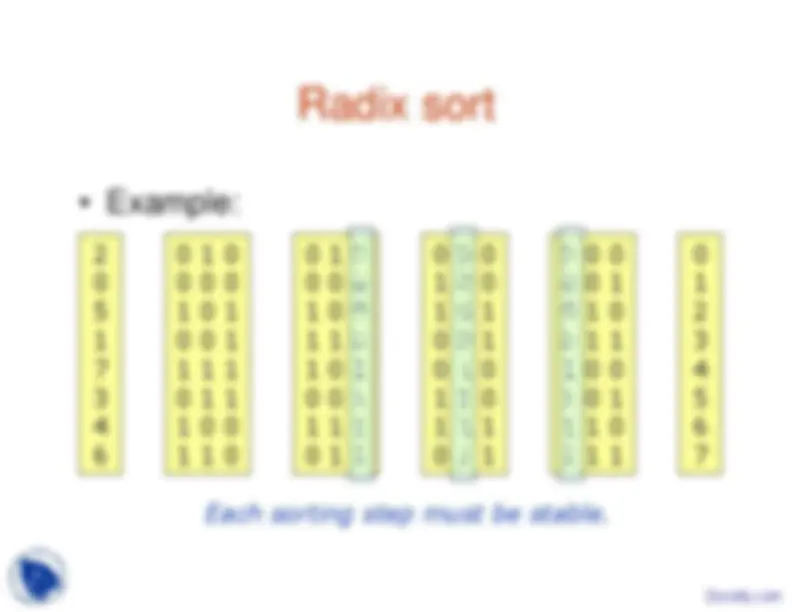


Study with the several resources on Docsity

Earn points by helping other students or get them with a premium plan


Prepare for your exams
Study with the several resources on Docsity

Earn points to download
Earn points by helping other students or get them with a premium plan
Community
Ask the community for help and clear up your study doubts
Discover the best universities in your country according to Docsity users
Free resources
Download our free guides on studying techniques, anxiety management strategies, and thesis advice from Docsity tutors
An overview of naive sorting algorithms, including bubble sort, insertion sort, selection sort, and a comparison of their pros and cons. The document also includes exercises for counting operations in bubble sort and finding the runtime complexity of selection sort. Additionally, it introduces advanced sorting techniques like bucket sort and radix sort.
Typology: Slides
1 / 17

This page cannot be seen from the preview
Don't miss anything!










scan for flips, until all are fixed
Etc...
Correctness
•Note: after i steps, the sub-array A[0:i] issorted
Radix Sort